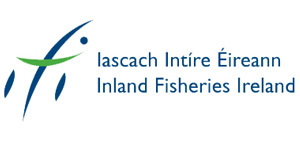Sampling Fish for the Water Framework Directive – Summary Report 2020
Executive summary
Inland Fisheries Ireland has been assigned the responsibility by the EPA of delivering the fish monitoring requirements of the Water Framework Directive (WFD) in Ireland. In 2020, nine lakes, 44 river sites and one transitional water body were surveyed as part of the national WFD fish surveillance monitoring programme. An additional two lakes, 217 river sites and nine transitional water bodies were surveyed as part of a new index catchment monitoring approach to WFD fish monitoring and to support other IFI projects and programmes. Ecological fish status was assigned to the majority of sites and waterbodies.
All surveys were conducted using a suite of European standard methods, including a range of different net types to sample lakes and transitional waters and a ten-minute electrofishing method (TEF10) for sampling rivers.
Nine fish species were captured across the 11 lakes surveyed in 2020, with brown trout the most abundant species recorded. The FIL2 ecological classification tool was used together with expert opinion to assign fish ecological status to each lake surveyed. Three lakes were assigned a status of High; five lakes were assigned Good; two lakes were assigned as Poor and one lake was assigned as Bad. All lakes had been surveyed previously and when compared to previous result, it was found that seven lakes (64%) had an unchanged ecological status, two (18%) showed an improvement in status, with the remaining two, i.e. Fern and Glencar Loughs (18%) showing a deterioration.
Thirteen fish species were recorded across river sites surveyed in 2020, with brown trout the most abundant species, occurring in 235 out of 261 sites. The FCS2-Ireland ecological classification tool was used together with expert opinion to assign ecological status to each river site. A total of 21 sites were classified as High status, 80 were classified as Good, 110 were classified as Moderate, 44 were classified as Poor and four were classified as Bad. Two sites were unclassified, following a sense check using expert opinion. Of the 259 sites assigned an ecological fish status in 2020, 128 sites had previously been surveyed and classified. Of these the status of 76 (59.3%) sites remained stable between surveys, while 40 (31.3%) sites deteriorated and 12 (9.4%) showed an improved status.
A total of 46 species of fish were captured in the ten transitional waters surveyed in 2020. Sand Goby and Flounder were the most abundant species recorded. Species richness is an important indicator of water quality in transitional waters and both Broad Lough and the Lower Bandon had the highest species richness with 23 different species recorded. The Upper Bandon had the lowest species richness, recording only four species. The EMFI ecological classification tool, together with expert opinion was used to assign ecological status to each transitional water surveyed. Six transitional waters were classified as Good, three as Moderate and one as Poor.
Topics: Summary Reports |
